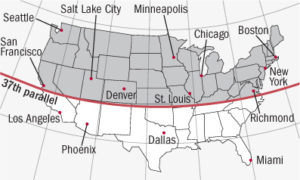What’s fat-soluble, naturally present in only a few foods, and is triggered by ultraviolet B (UVB) rays from the sun? If you answered “Vitamin D,” you are correct.
Vitamin D, also know as the “Sunshine Vitamin” is an important piece of your diet, and, unfortunately, you likely aren’t getting enough of it. Vitamin D does wonders for your body: Reduces inflammation, promotes calcium absorption in the gut, maintains phosphate and calcium concentrations, and is necessary for bone growth and remodeling, and much more.
Without it, you’ll end up with brittle bones, unable to play hockey and make snow angels, which is, of course, unacceptable in Minnesota.
Plus, there’s a boatload (sledload?) of researchers who have discovered that it controls an enormous number of genes, including those associated with cancer.
Vitamin D: Searching for sunshine
As illustrated above, there are two ways your body can obtain vitamin D: Through diet (food/supplements), and UVB rays from the sun. There are very few natural foods that contain adequate amounts of vitamin D. Like what, you ask? Salmon, tuna, mackerel, egg yolk, cheese, mushrooms, fish liver oils, and lutefisk (mmm, my favorite…). There are, however, some foods that have added (fortified) vitamin D: Ready-to-eat cereals, milk, orange juice, margarine, and yogurt are often a great source as well.
As if it wasn’t hard enough to get vitamin D from lutefisk and other Minnesota favorites, it’s even more difficult to get adequate amounts from the sun if you live in this state: For half the year UVB rays do not reach MN’s latitude, which means it’s impossible to synthesize them from the sun.

womp, womp
People who live at latitudes above 37 degrees north (the shaded area) make little, if any, vitamin D from the sun for nearly half the year in (our fall and winter months). Other than the season, factors that influence synthesis and UV exposure include the length of day, cloud cover, smog, skin melanin content, pollution, and sunscreen.
Conditions are perfect
It has been suggested by the New England Journal of Medicine’s research that, “approximately 5-30 minutes of sun exposure between 10 a.m. and 3 p.m. at least twice a week to the face, arms, and legs or back without sunscreen usually lead to sufficient vitamin D synthesis.” (Holick MF. Vitamin D deficiency, 2007).
But a lack of sunshine may not be the only problem. People with some health conditions like Crohn’s, Celiac and other diseases causing fat malabsorption can’t get enough from the diet even if they eat an abundance of D-rich foods. Simply put, it’s because vitamin D is fat-soluble, and its absorption is completely dependent on the gut’s ability to absorb dietary fat. Those who have liver and/or kidney disease are also of concern, since the liver and kidneys are responsible for activating vitamin D (reference the first diagram above). So if you can’t get it from food or the sun, then what?
…and here come the supplements
Unless you eat mountains of fatty fish and fortified foods every day, spend ample time in the sun during our few summer months, and don’t have any disease that affects absorption, supplements may be your answer. But, before you go crazy on the supps, it may be a good idea to get your blood drawn to test for vitamin D deficiency.
Check out this list of resources to learn more about vitamin D recommendations and supplementations:
Minnesota Department of Health
National Institute of Health, NIH
Vitamin D Council
And, if everything is in order, you can pick up vitamins at almost any/all grocery stores to make sure you’re getting enough and don’t end up without the D.
Read next: Celebrating 100 years of food, health, nutrition, education


















